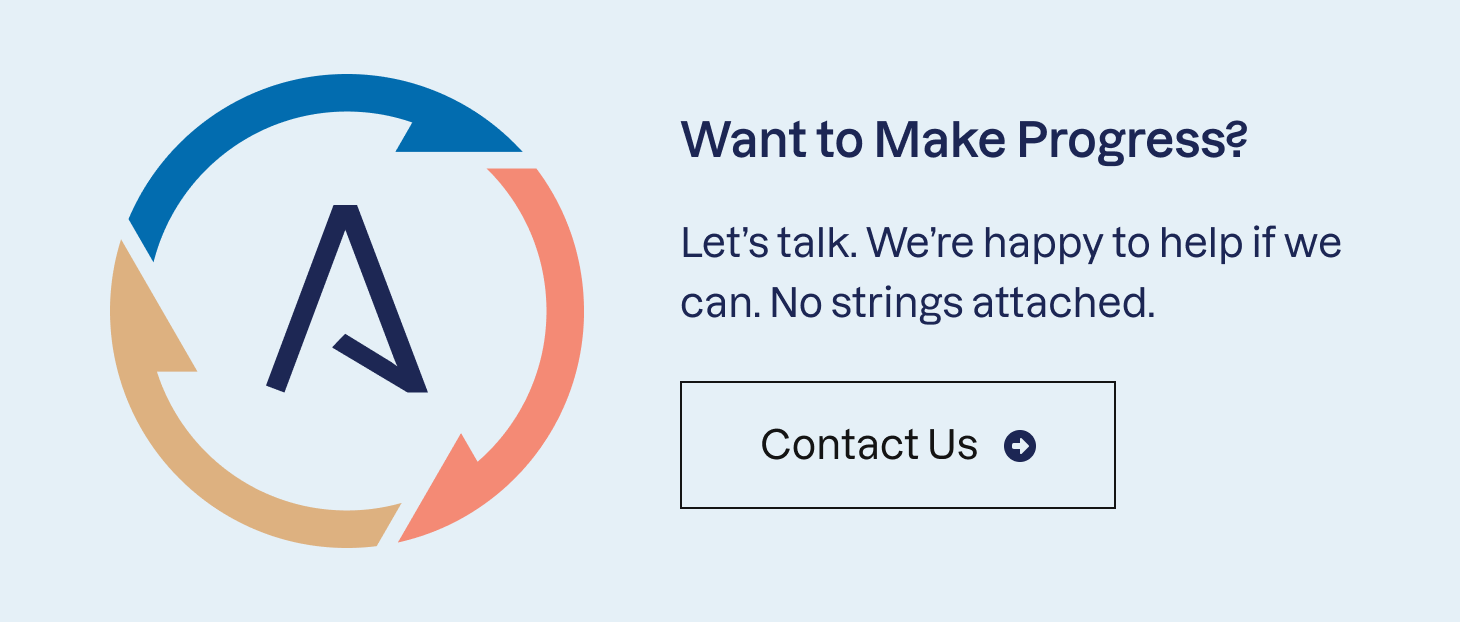4 Questions You Need to Answer to Ensure a Successful Site Redesign
Too often, organizations pursue a website redesign based on a feeling.
At the moment your previous website launched, you and your stakeholders felt more positive about the results than ever. The site’s balance between text and white space was uniformly pleasant, and every page functioned at its peak potential. Then, as time went on, your feelings gradually diminished.
Maybe new technology was introduced that made your former cutting-edge design appear clunky and dated. Or maybe design norms shifted along with your tastes and the whole visual experience leaves something to be desired. Whatever the reason, you feel like you’re ready for a change—even though your last redesign was only a few years ago.
Given that businesses have long operated under the assumption that website designs only last about five years, you may be right and a refresh is just what your business needs. But thinking about redesigns in these terms is simply wrong.
Websites are too valuable to your business to be evaluated subjectively. No matter how you feel about your site or any prospective redesign, you need to answer four basic questions to ensure its success in the long run.

1. Do You Have Clear, Supported Goals for Your Website?
To use a computing analogy, your website is the core processor driving every aspect of your marketing. Before you can determine what your website needs to improve, you first need to gain a clear picture of how it serves your business goals.
This question is deceptively simple. Your initial response might be related to general results such as “increase sales” or “raise brand awareness.” Or your business may target more specific needs such as increasing conversions. But marketing managers often fail to account for the broader role your website plays in your organization.
A well-designed website can do more than impact customer acquisition efforts. It can improve customer service outreach, enhance recruiting efforts, and centralize human resources tools. But seeing these goals to their fruition requires buy-in at the highest level of your organization.
Gain Stakeholder Buy-in Through Setting Measurable Goals
Many businesses are reluctant to invest in digital, especially during an uncertain economic climate. But marketing requires resources, and that’s especially true for your website.
By setting goals that are specific and measurable, you can start generating the organizational support you need. With the right agency partner, you can tackle incremental site enhancements that deliver a clear return on investment.
Once you’ve made the connection between how your website serves your marketing goals and the success of the organization more broadly, you can build a foundation toward an empowered digital platform.

2. Do You Have a Design Strategy to Meet Your Website Goals?
When a website isn’t delivering the results you want, your first instinct may be to lay the groundwork for a redesign. But ultimately, a beautiful site can still fail to meet your goals.
From the beginning, you need an effective design strategy that focuses on providing a positive user experience and reinforces your brand identity. From there, creating the right look for your site will take care of itself.
UX Design Drives Every Effective Website
Establishing a design strategy requires taking a holistic look at how your website functions. Google Analytics, user testing, and audience research provide a closer look at your customers’ interests and how well your site is meeting their expectations. Your website isn’t just a standalone initiative; it’s a digital platform to extend your brand’s reach. Its capabilities should be integrated across your organization.
Tracking and defining a clear user journey for your customers isn’t easy. Do you start by changing your landing pages or updating the navigation? And, if you try driving conversions with paid media, how can you be sure your contact form reaches the right customers and is designed properly? Fortunately, you don’t have to attempt to craft a design strategy for your business alone.
The right agency partner will take a holistic view of your organization’s goals in the context of your audience’s needs. At COLAB, we have a track record of defining clear digital strategies for businesses in a variety of industries. With a UX design that encourages interaction and guides your customers, your marketing goals will be within reach and the impact across your organization will be recognizable.

3. Does Your Site Allow You to See What’s Working?
Site analytics offer the clearest view of the areas of your site that need improvement. Rather than approaching a redesign to satisfy vague or even subjective issues such as an out-of-date appearance and limited functionality, you can consult your design agency to resolve issues supported by data.
Metrics illustrate crucial details about user engagement, including time-on-site totals, bounce rates, and page views. Article pages with long session times indicate content that’s resonating with your customers, while underperforming contact forms could reflect design or placement issues.
Site Metrics Provide a Snapshot of Content Performance
Tools like Google Analytics illuminate more details than how well your site is delivering conversions. You can analyze patterns in user behavior to optimize approaches to business development, customer service, and HR. By determining the KPIs most applicable to your needs, you can use GA to understand how well your site serves your goals.
Site analytics are capable of delivering crucial insights, but you need expertise to generate customized reports and see the greatest benefits. Tools like Google Data Studio help democratize your site by translating abstract user data into intuitive dashboards.
The better your stakeholders understand how your site impacts marketing performance, the more engaged they become in its success.
4. Can You Make Changes to Your Site that Make a Difference?
Given the value your website provides, you can no longer follow an out-of-date, multiyear cycle of site redesigns. When your site’s design and technology have been approached thoughtfully, your teams have the flexibility to continually make improvements over time.
Modern site platforms like Drupal and WordPress offer new possibilities for your site editors to create updates without developer assistance. With a flexible backend design, your team can access your CMS with a clear understanding of how changes impact your site. Plus, by incorporating modern techniques like a pattern library, you can quickly create new pages, forms, and features using proven components.
In addition to the power of analytics, you gain a clear window into the real results generated by the new features your teams produce. Empowering your teams to change, learn from, and improve your site encourages them to become more invested in its success.
Applying a strategic approach to your website transforms it from a static product to a system of inputs and outputs that can drive measurable results across your entire organization. When you change the building blocks of your digital platform, you grow closer to receiving the outputs you want. If this sounds like a system that would benefit your organization, we should talk.

